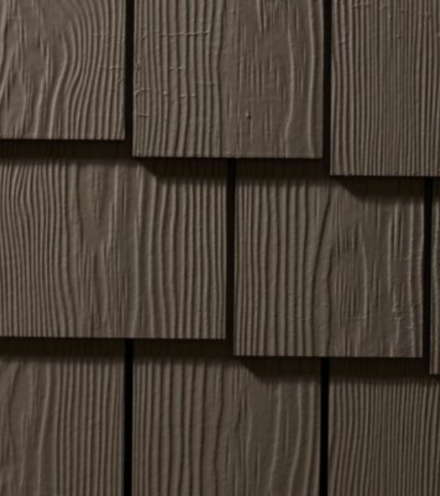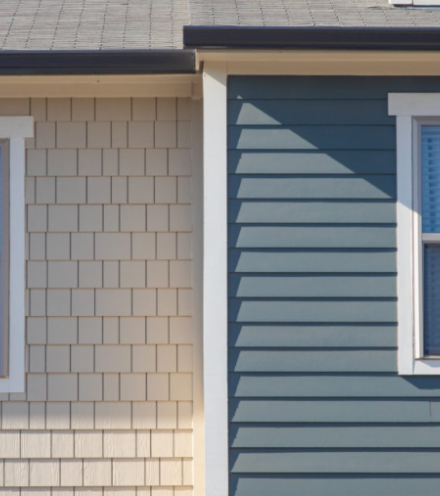6 Stucco Commercial Building Design Ideas
Stucco is a classic building material that has been around since the times of antiquity. However, it’s not old fashioned anymore. Modern commercial buildings have become incredibly focused on adding stucco to their exterior. Thankfully, there are tons of ways to make it happen.
How popular is it? Well, let’s look at the facts. There are now groups that specialize in exterior stucco wall design for commercial building projects. They also have groups that specialize in custom stucco color design for commercial building projects. It’s *so* hot right now.
Are you looking for a little bit of inspiration for your next mass project? Take a look at these photos below.
1. 70s Colors With A Little Siding

Here’s a pro tip: you don’t need a full stucco exterior. Many building designers are now blending different colors of vinyl siding with stucco accents. Here, we see a commercial apartment that uses a blend of different exterior materials with a pastel take on 70s exterior colors. It’s chic!
You might start seeing stucco in similar color palettes with even bolder color ensembles soon enough. Word is that there are several designers hoping to bring back bold yellows, oranges, and reds as part of the standard commercial exterior design palette. If this is true, we’re going to see a major pop of color in the future!
As designers continue to get inspired by palettes and siding options from the past, expect to see more and more buildings that remind you of places you used to know. Retro is in, baby!
2. Multicolor Stucco

If you have seen “gentrifier” apartment buildings near you, you’ve probably seen places like this around town. The most common stucco commercial building design out there right now involves using different colors of stucco to section off parts of the building. It adds dimension.
These days, this particular layout is basically “code” for being a luxury building. It’s commonly seen in upscale apartments, mixed-use buildings and (occasionally) hospitals that tend to try to hide the fact that they’re hospitals.
If you want to add a luxe flair, then this is a good way to do it. Here, we see the concept of differing colors with a more “traditionally commercial modern” palette—blue, white, and a little tan. The tan helps warm up the building, giving it a good look for a mixed use building.
3. Stucco And Woodlook Vinyl

Another commonplace way to make a building look luxe is to use stucco and woodlook vinyl to add a polished facade to your building. This has become particularly popular with commercial apartment buildings as well as certain styles of luxury dining facilities.
Wood has become increasingly popular as an exterior style now that companies have found a way to replicate the look of wood without the pest problems that real wood can have. It also became more popular as real wood treatments have improved.
Thank goodness wood looks so slick with grey stucco siding, don’t you agree? Here, it looks like this office is ready to become a design magazine centerpiece.
4. 80s Textured Stucco

During the 1980s, heavily textured stucco in sections was the go-to for corporate buildings. While it’s not as popular as it once was, there’s no reason why you can’t indulge in a little old school retro building design. It’s been a classic commercial building motif for ages.
Textured grey stucco might be a bit drab to many people, but this is one of those trends that you have to give credit to. It’s timeless for a reason. It looks like rough hewn stone, which always offers an urbane and sophisticated veneer.
If you want to go this route, make sure that you use clean, crisp lines and lots of windows. It’s a classic look that helps mark your building as a professional office building rather than a mixed-use or apartment building.
5. Marble Stucco

While 80s stucco siding looked like sandpaper, new textures have popped up since then. This house uses a marble stucco exterior corner to add dimension and texture without resorting to the classic “sandpaper gravel” look. It’s sleek and sharp, without it being too heavy-handed.
Admittedly, this kind of stucco can be hard to get. If you are struggling, you can also use marble look siding to get a similar effect—often at half the price. This home here used marble look stucco as one of many different textures, including some reclaimed wood.
As trends continue to veer towards environmentally-friendly building materials, you’re going to start to see companies opt for this type of “mixed media” building design. We suggest giving this type of siding design a try if you have a commercial restaurant, a trendy hotel, a cool spa, or similar.
6. Go Bold Or Go Home

Stucco commercial building design often hinges on plain neutrals. It’s a nice way to flex that you’re a corporate building, right? Well, traditionally, that is the case. Neutrals, particularly grey and white, tend to be the hallmark of a big, fancy commercial building. (Heck, look at New York City as an example!)
However, times are changing. People are beginning to realize that having a building that stands out can be very good for the businesses inside of it. After all, it’s way easier to say, “Go to the green building on Spring Street” than it is to try to explain which building is number 57, right? Of course.
To help make a mark on the local scenery, companies are using boldly-colored stucco to make their buildings pop out against their blandly-colored competitors. This lime green building can be seen from a mile away. It’s safe to say that people who visited this hotel were able to point others to it with ease.
As you can see, stucco commercial building ideas are always evolving. That’s what makes stucco so awesome. It can be used in a variety of different ways, for an endless array of different styles. You might even say that there’s no way to feel stuck when you’re working with stucco.



